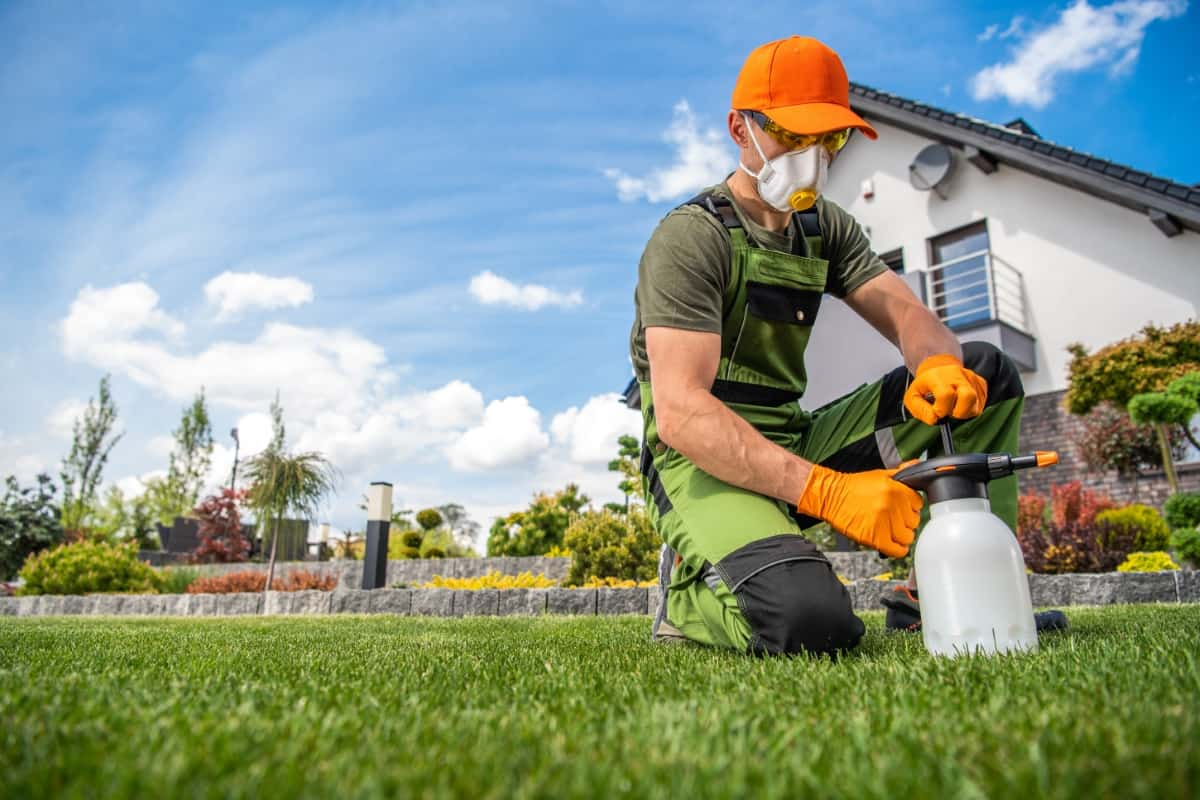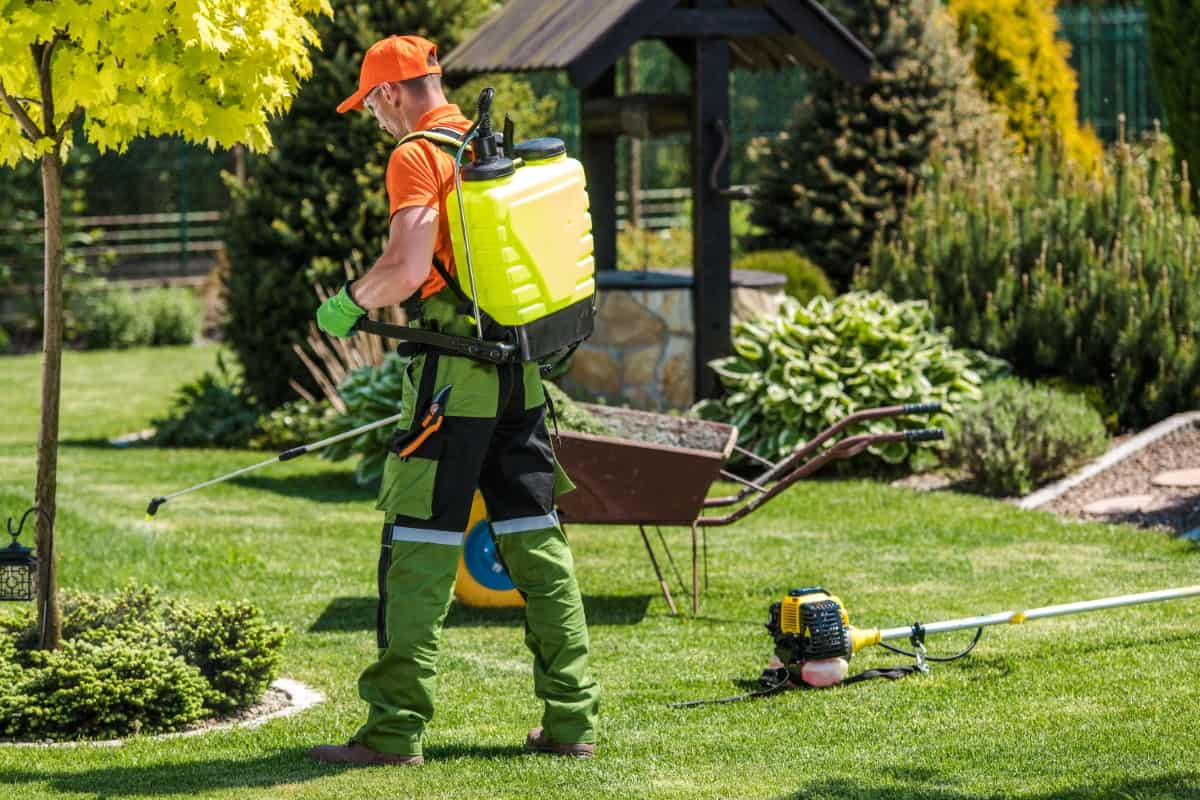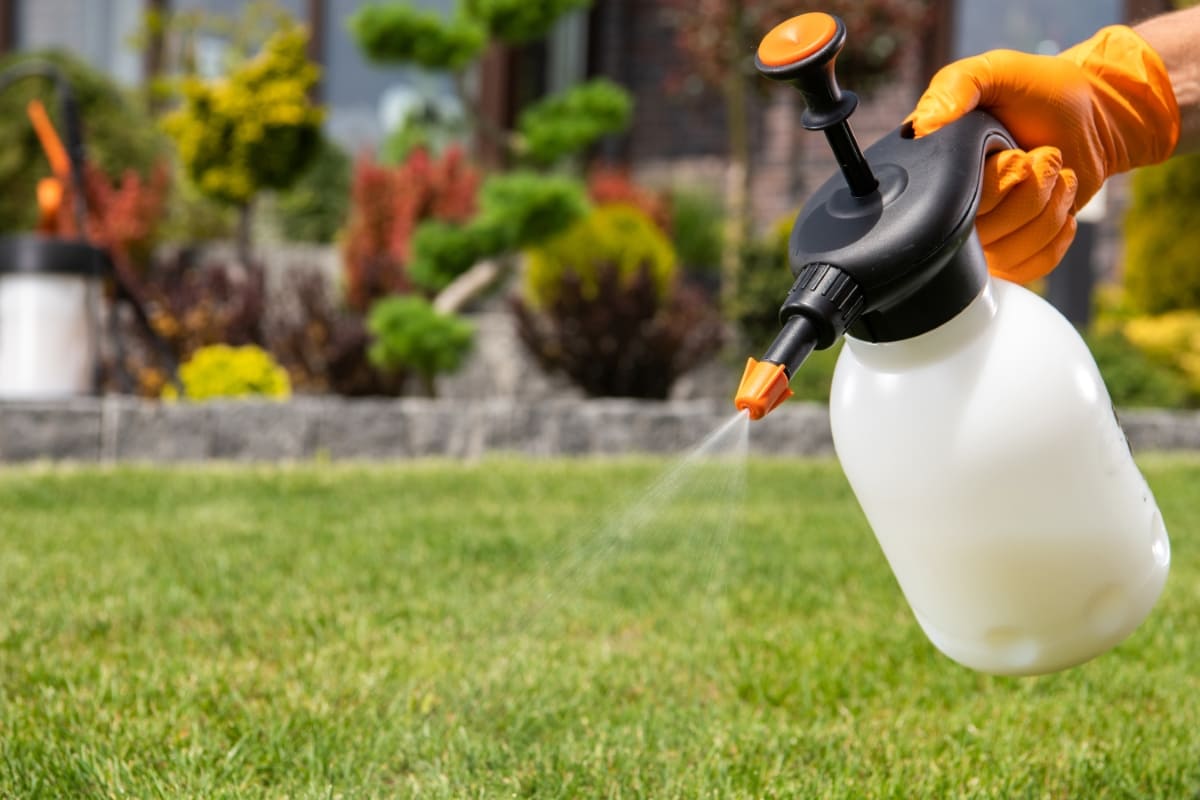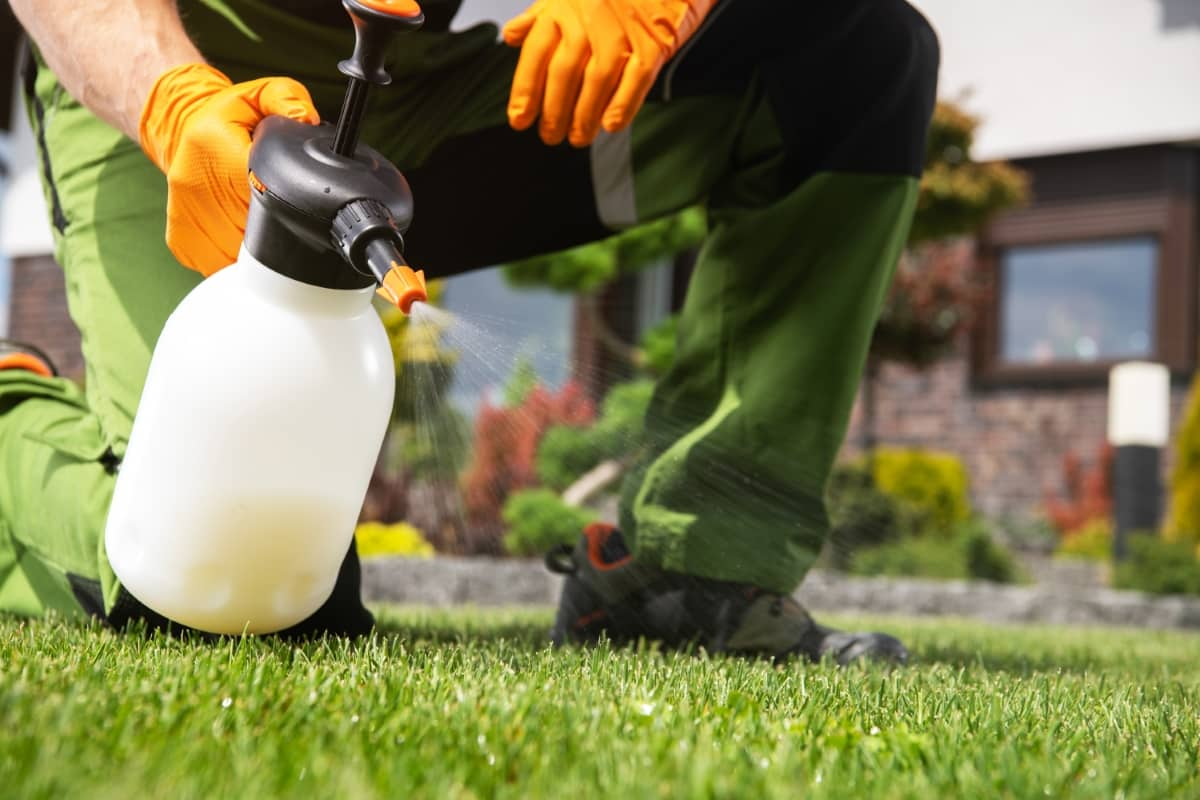Seeking optimal lawn health? Explore our curated list of the finest fungicides, meticulously chosen for their effectiveness in treating lawn fungal diseases. From preventive solutions to systemic treatments, these top-rated fungicides offer broad-spectrum protection. Implement eco-friendly options for sustainable lawn care without compromising efficacy.

With our expert tips on fungicide application, you can ensure proper usage for maximum results. Elevate your lawn care routine with these premium fungicides, safeguarding your grass against diseases and promoting lush, vibrant greenery. The fungus can ruin the appearance and health of your lawn, but you can prevent and treat it with the right fungicides. Here are the top 10 fungicides for lawns based on their active ingredients, effectiveness, and safety.
Best Fungicide for Lawns
Propiconazole: Broad-Spectrum Disease Control
Propiconazole is a systemic fungicide that works by inhibiting the growth, reproduction of fungal cells. It can control a wide range of lawn diseases, such as brown patches, dollar spots, leaf spots, rust, powdery mildew, and more. Propiconazole is best applied as a preventive measure before symptoms appear or at the first sign of infection. It can be mixed with water and sprayed on the lawn using a hose-end or tank sprayer. The recommended rate is 1 to 2 fl oz per 1000 sq ft of lawn area.
Azoxystrobin: Systemic Protection and Cure
Azoxystrobin is another systemic fungicide that belongs to a different chemical group than propiconazole. It works by interfering with the energy production of fungal cells, causing them to die. Azoxystrobin can protect and cure your lawn from various diseases, such as anthracnose, gray leaf spot, red thread, summer patch, and more. Azoxystrobin is best applied as a preventive or early curative treatment before the disease becomes severe. It can be applied as granular and liquid product, depending on the formulation. The typical rate is 0.31 to 0.78 oz per 1000 sq ft of lawn area.
Chlorothalonil: Multi-Disease Contact Fungicide
Chlorothalonil contact fungicide works by forming protective barrier surface of the grass blades, preventing fungal spores from germinating and infecting the plant. It can control multiple diseases, such as algae, blight, leaf spot, melting out, and more. Chlorothalonil is best applied as a preventive treatment before disease development or when conditions are favorable for disease outbreaks. It can be applied as a liquid or wettable powder product, depending on the formulation. The usual rate is 4 to 6 fl oz per 1000 sq ft of lawn area.
Myclobutanil: Against Powdery Mildew and Rusts
Myclobutanil is a systemic fungicide that works by inhibiting synthesis of ergosterol of fungal cell membrane. It can control powdery mildew and rust, two common diseases that affect lawns in humid or shady conditions. Myclobutanil is best applied as a preventive or early curative treatment before the disease spreads too much. It can be applied as a liquid product using a hose-end or tank sprayer. The recommended rate is 2 to 4 fl oz per 1000 sq ft of lawn area.
In case you missed it: Top 10 Homemade Garden Lawn Sprays: Easy DIY Solutions for Getting Rid of Bugs

Triadimefon: Systemic Rust and Mildew Solution
Triadimefon is another systemic fungicide that works by inhibiting the synthesis of ergosterol in fungal. It can control rust and powdery mildew, as well as other diseases such as dollar spot, leaf spot, take-all patch, and more. Triadimefon is best applied as a preventive or early curative treatment before the disease becomes severe. It can be applied as a granular and liquid product, depending on the formulation. The typical rate is 0.5 to 1 oz per 1000 sq ft of lawn area.
Mancozeb: Broad-Spectrum Multi-Site Action
Mancozeb contact fungicide works by affecting multiple biochemical processes in fungal cells, causing them to die. It can control a broad spectrum of lawn diseases, such as anthracnose, brown patch, gray leaf spot, pythium blight, and more. Mancozeb is best applied as a preventive treatment before disease development or when conditions are favorable for a disease outbreak. Applied as wettable powder product using a tank sprayer. The usual rate is 2 to 5 oz per 1000 sq ft of lawn area.
Flutolanil: Targeted Rhizoctonia Disease Control
Flutolanil is a systemic fungicide that works by inhibiting the growth of fungal hyphae in plant tissues. It can control Rhizoctonia diseases, such as brown patches and large patches, which are common in warm and wet conditions. Flutolanil is best applied as a preventive treatment before disease symptoms appear or at the first sign of infection. It can be applied as a granular product using a broadcast or drop spreader. The recommended rate is 2 to 4 lb per 1000 sq ft of lawn area.
Thiophanate-methyl: Wide-Range Disease Management
Thiophanate-methyl is a systemic fungicide that works by interfering with the cell division of fungal cells. It can control a wide range of lawn diseases, like dollar spot, leaf spot, red thread, snow mold, and more. Thiophanate-methyl is best applied as a preventive or early curative treatment before the disease becomes severe. It can be applied as a granular and liquid product, depending on the formulation. The typical rate is 2 to 4 oz per 1000 sq ft of lawn area.
Iprodione: Fast-Acting Turf Disease Treatment
Iprodione is a contact fungicide that works by inhibiting the germination of fungal spores and the growth of fungal hyphae. It can control fast-acting turf diseases, such as brown patches, gray leaf spots, pythium blight, and more. Iprodione is best applied as a curative treatment when disease symptoms are visible or when conditions are conducive to disease development. It can be applied as a liquid product using a hose-end or tank sprayer. The usual rate is 4 to 8 fl oz per 1000 sq ft of lawn area.
In case you missed it: Guide to Using Sevin Insect Killer Dust for Lawn Pest Control

Fenarimol: Preventive and Curative Effects
Fenarimol is a systemic fungicide that works by inhibiting the synthesis of ergosterol in fungal. It can control powdery mildew and rust, as well as other diseases such as dollar spot, leaf spot, red thread, and more. Fenarimol has both preventive and curative effects, depending on the application rate and timing. It can be applied as a liquid product using a hose-end or tank sprayer. The recommended rate is 1 to 2 fl oz per 1000 sq ft of lawn area.
Top 10 Fungicides for Lawns/Grass
| Fungicide Name | Dosage (per 1000 sq ft) | Effectiveness |
| Propiconazole | 1 to 2 fl oz | Broad-spectrum disease control |
| Azoxystrobin | 0.31 to 0.78 oz | Systemic protection and cure |
| Chlorothalonil | 4 to 6 fl oz | Multi-disease contact fungicide |
| Myclobutanil | 2 to 4 fl oz | Against powdery mildew and rusts |
| Triadimefon | 0.5 to 1 oz | Systemic rust and mildew solution |
| Mancozeb | 2 to 5 oz | Broad-spectrum multi-site action |
| Flutolanil | 2 to 4 lb | Targeted rhizoctonia disease control |
| Thiophanate-methyl | 2 to 4 oz | Wide-range disease management |
| Iprodione | 4 to 8 fl oz | Fast-acting turf disease treatment |
| Fenarimol | 1 to 2 fl oz | Preventive and curative effects |
In case you missed it: How to Get Rid of Weevils in Lawn Naturally: Control and Treatment

Conclusion
Fungus poses a significant threat to lawn health and beauty, but with the right fungicides, you can prevent and treat various diseases like brown patches, dollar spots, leaf spots, rust, and powdery mildew. However, it’s crucial to read label instructions, wear protective equipment, and follow label instructions before applying any fungicide. Good lawn care practices like watering, mowing, fertilizing, and aerating are also essential. Combining these practices with appropriate fungicides can ensure a healthy and fungus-free lawn.
- Deworming Schedule for Dogs/Puppies: A Beginners Guide
- How to Prevent and Control Parasites in Goats
- Beneficial Insects in Pest Management
- Natural Solutions for Pest Control in Flower Gardens
- Types of Fungicides Used in Agriculture
- Common Issues in the Fruit Development Stage of Pomegranate Farming
- Fruit Development Issues in Papaya: Easy Solutions and Treatment
- Soil-Borne Diseases and How to Protect Your Plants
- Practices to Prevent Disease Spread in the Garden